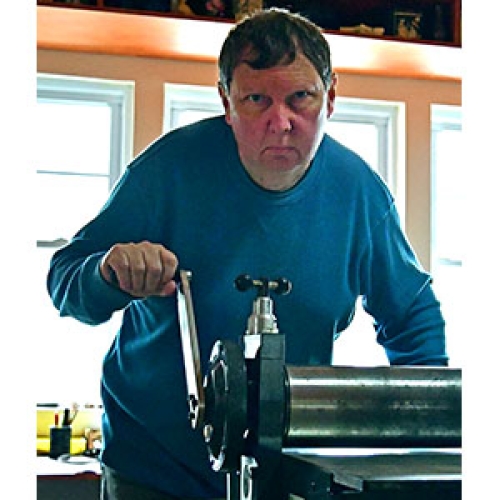
b. 1954
If as Emerson said, "the whole of nature is a metaphor for the human mind," does that sentiment extend into the notion of cityscape where who we can be is even more explicitly expressed? New art forms have arisen since this idea was first posed, but the elemental relationship we maintain with our environment remains inseparable from our humanity, a portal into our innermost depths. This is where my work begins, with long walks, seeking out places that speak directly to me. These are points of translation, points I transcribe into a visual language of a thousand etched lines and marks. While my work follows a representational tradition, the goal is not to merely render or document. In these images of a new New York, I strive to avoid convention for it is through the unfamiliar that we can best imagine ourselves. These etchings present a borderland, one that encourages trespass, one that serves as an invitation to journey.
Alan Petrulis, a native New Yorker, studied at Queens College and the Maryland Institute College of Art where he earned an MFA in printmaking. Petrulis was accepted into The Society of American Graphic Artists in 1999 and has worked closely with the New York Society of Etchers. His work has appeared in numerous exhibitions accruing many awards, most notably the Cannon and Ralph Fabri prizes from the National Academy of Design. His work can be found in the permanent collections of The Brooklyn Museum, The New York Historical Society, The Museum of the City of New York, The New York Transit Museum, The Boston Atheneum, Syracuse University, and the Cahoon Museum on Cape Cod plus many others.
“I fell in love with intaglio before I ever even picked up an etcher’s needle. From the first moment that a fellow student showed me a freshly pulled print, I knew it was something I just had to do. Home is my anchor from where I wander outward on a line without end. Walking has become an essential element to my work, for it is within these journeys that my etchings are conceived. It is not just about searching out a good composition but in having intimate contact with places, to be able to see into the soul of things. I have heard it said that if a landscape is an instrument then walking through it is a song.”
SHARE